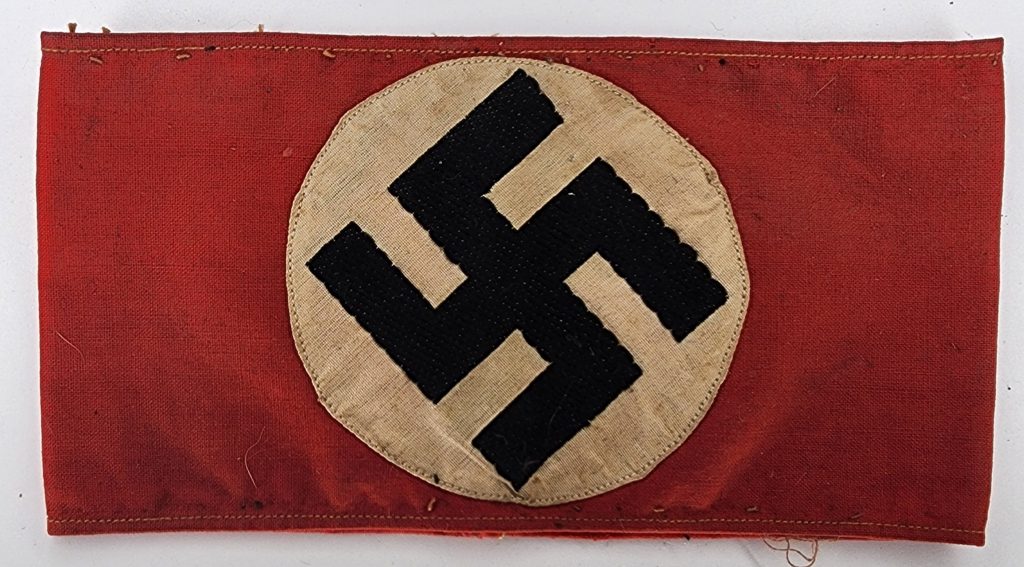The collecting of WWII German Medals & Insignia is almost like collecting baseball cards in the sense that there seems to be almost an endless quantity of different ones to collect, condition means everything, and as the rarity increases, so do the reproductions. We recommend that if this is something you decide to collect, do your homework! If the deal seems too good to be true, it probably is. In addition to military awards, we have an extensive collection of WWII “Tinnies” and WHW items. These items were purchased by Germans to commemorate events or rallies that they attended or as with WHW items, the proceeds went to charity organizations. Here are some of our favorite WWII German Medals & Insignia:
WWII German Iron Cross First Class: On March 10TH 1813, Prussian King Friedrich Wilhelm III established the Iron Cross as a temporary award for bestowal during times of war. Originally the Iron Cross was introduced in three grades with a Grand Cross intended for award to Senior Commanders for successfully leading troops in combat and the First and Second classes for award to all ranks for bravery or merit in action. The Iron Crosses were re-instituted by King Wilhelm I on July 19TH 1870 for award during the Franco-Prussian War and again on August 5TH 1914, by King Wilhelm II for award during WWI. On September 1ST 1939 Hitler once more re-instituted the Iron Cross series of awards in the First and Second Classes and established the Knight’s Cross of the Iron Cross. The first class medal was for award to personnel who performed three to five acts of bravery in combat, and had already been awarded the Iron Cross second class.
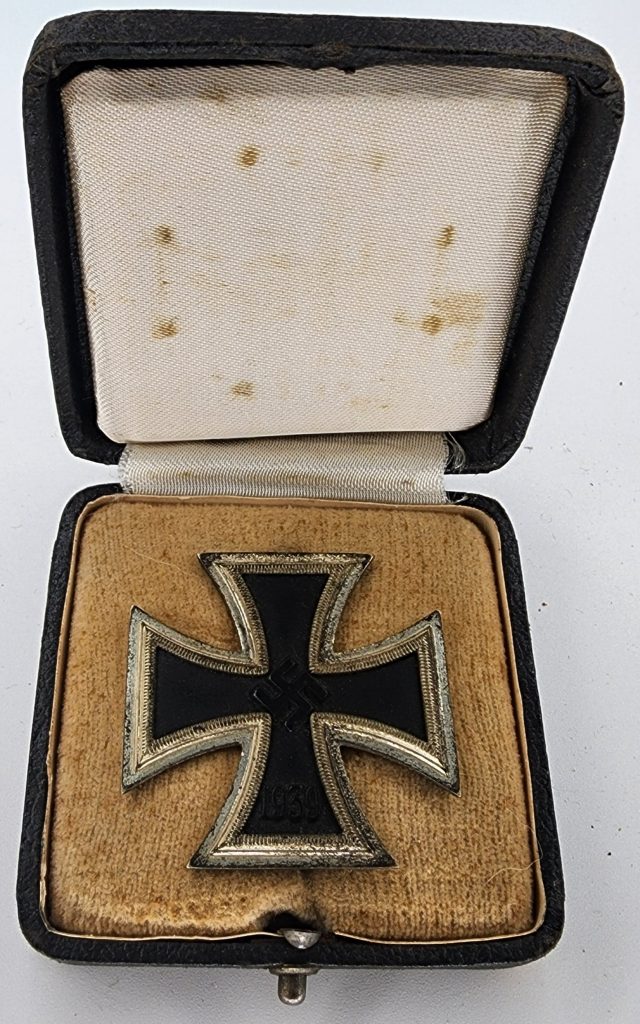
WWII Silver Condor Legion Wound Badge: The wound badge was originally established on March 3rd 1918 by King Wilhelm II to recognize the sacrifice of those wounded during WWI. The badge was instituted in three classes with the class bestowed reflecting the number or severity of the wounds received. On May 22nd 1939 Hitler re-instituted award of the black and silver WWI pattern wound badges, with the addition of the swastika, for bestowal to German volunteers, (Condor Legion), who had participated in the Spanish Civil war. These early wound badges utilized a WWI helmet behind the swastika. All three classes of the wound badge were re-instituted, with a slightly modified design, replacing the WWI style helmet with the new M35 style helmet, on September 1st 1939.
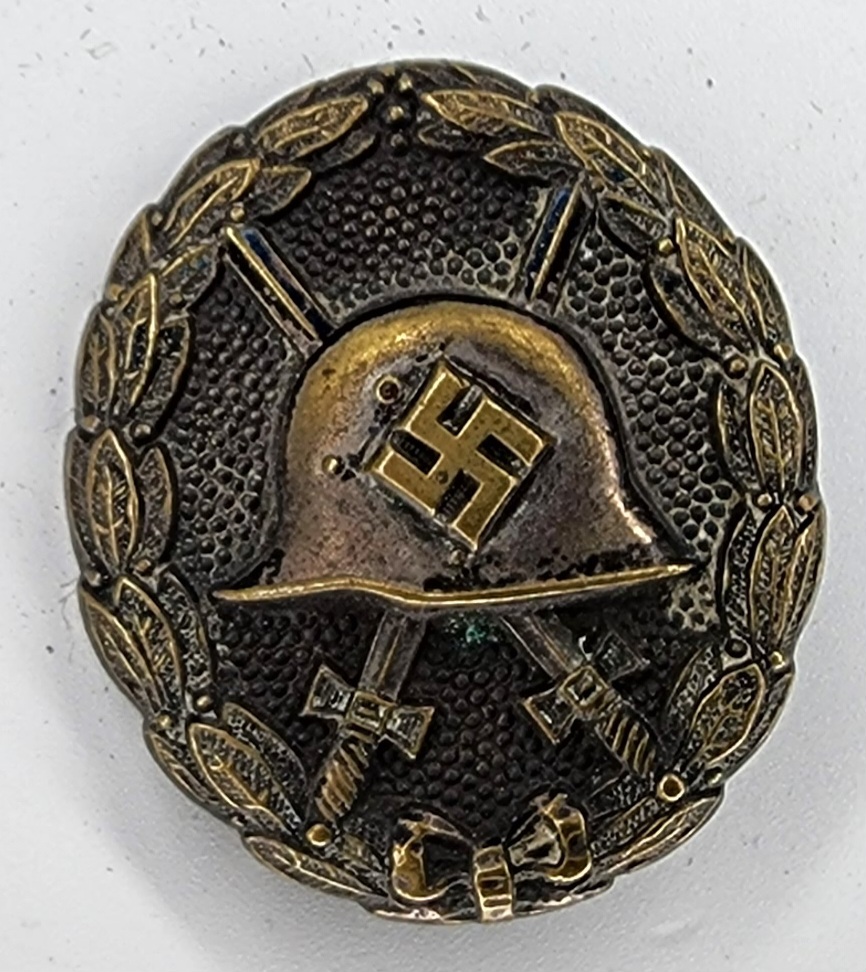
WWII Black Wound Badge: Condor Legion Wound Badge: On September 1st 1939, Hitler instituted the award of the black, silver and gold wound badges with the M35 style helmet.
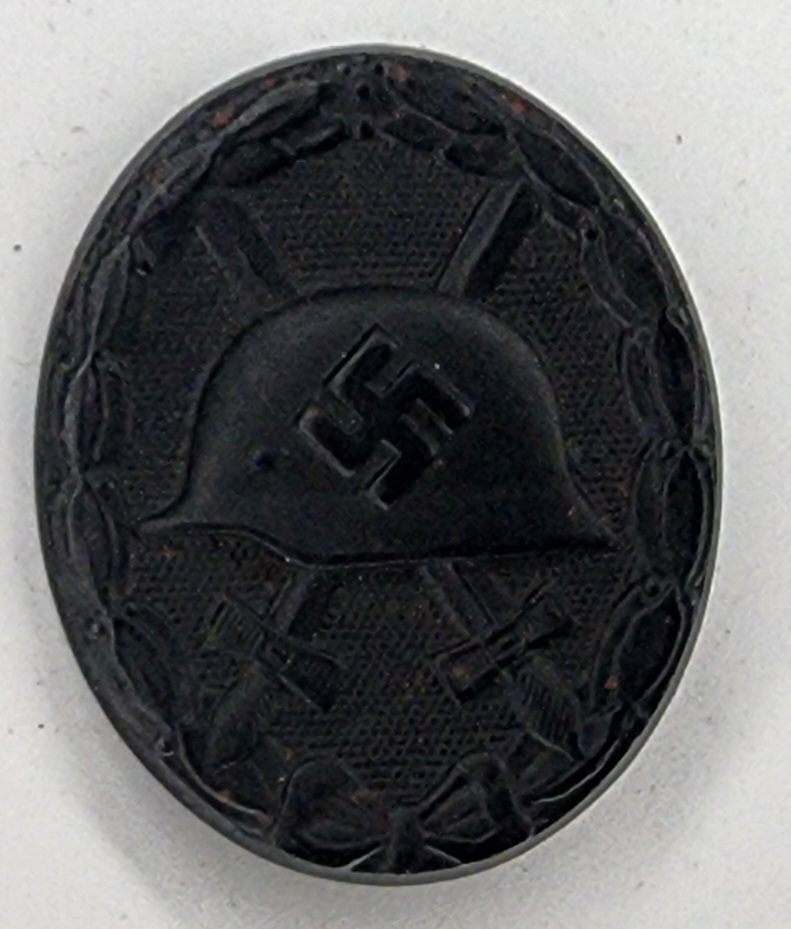
WWII German Dog Tag: These tags were designed to be broken into two pieces when the soldier wearing it was killed. One half would be collected if at all possible, and handed to the authorities for official notification. The other half would remain with the body itself.
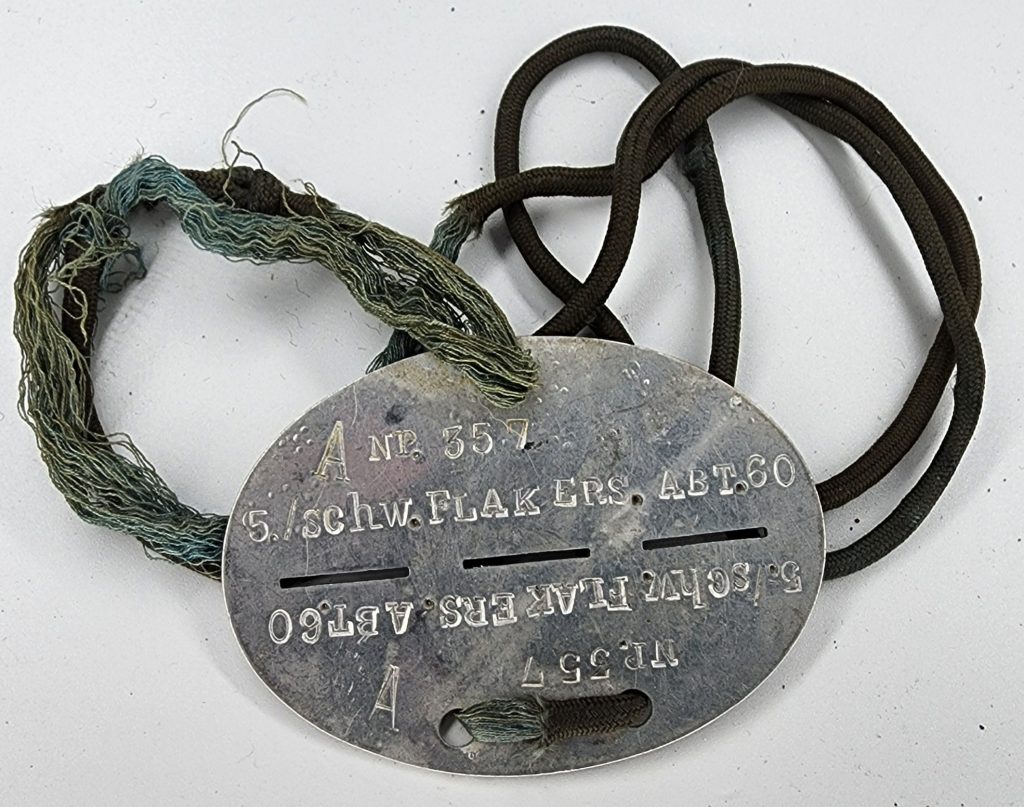
WWII German Mother’s Cross: The Cross of Honour of the German Mother was a state decoration conferred by the government of the German Reich to honor a German mother for exceptional merit to the German nation. Eligibility later extended to include Volksdeutsche (ethnic German) mothers from, for example, Austria and Sudetenland, that had earlier been incorporated into the German Reich. The decoration was conferred from 1939 until 1945 in three classes: bronze, silver, and gold, to mothers who exhibited probity, exemplary motherhood, and who conceived and raised at least four or more children in the role of a parent. 1st Class (Gold) Eight or more children, 2nd Class (Silver) six or seven children, and 3rd Class (Bronze) for four or five children.
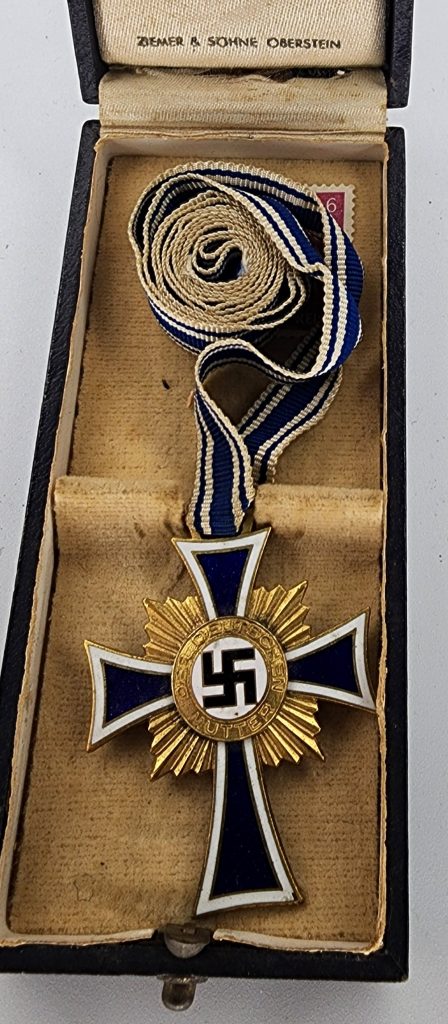
WWII Eastern Peoples Decoration, 1st Class w/ Swords. Officially designated, Bravery and Merit Decoration for the Eastern People, this series of awards was instituted on July 14th 1942 to recognize the contribution of volunteers from the Eastern European countries to Germany’s war effort. The awards were introduced in two classes with five grades and were awarded with swords for bravery in combat, or without swords for outstanding service to the war effort. The awards were rendered in a first class in gold and silver and a second class in gold, silver and bronze and all could be issued with or without swords. The first class awards were the pin back type while the second class awards were suspended from a ribbon. In October of 1942 bestowal of the first or second class silver award was extended to German nationals serving with “Osttruppen”, (Eastern Troops), providing they already held the Iron Cross first or second class.
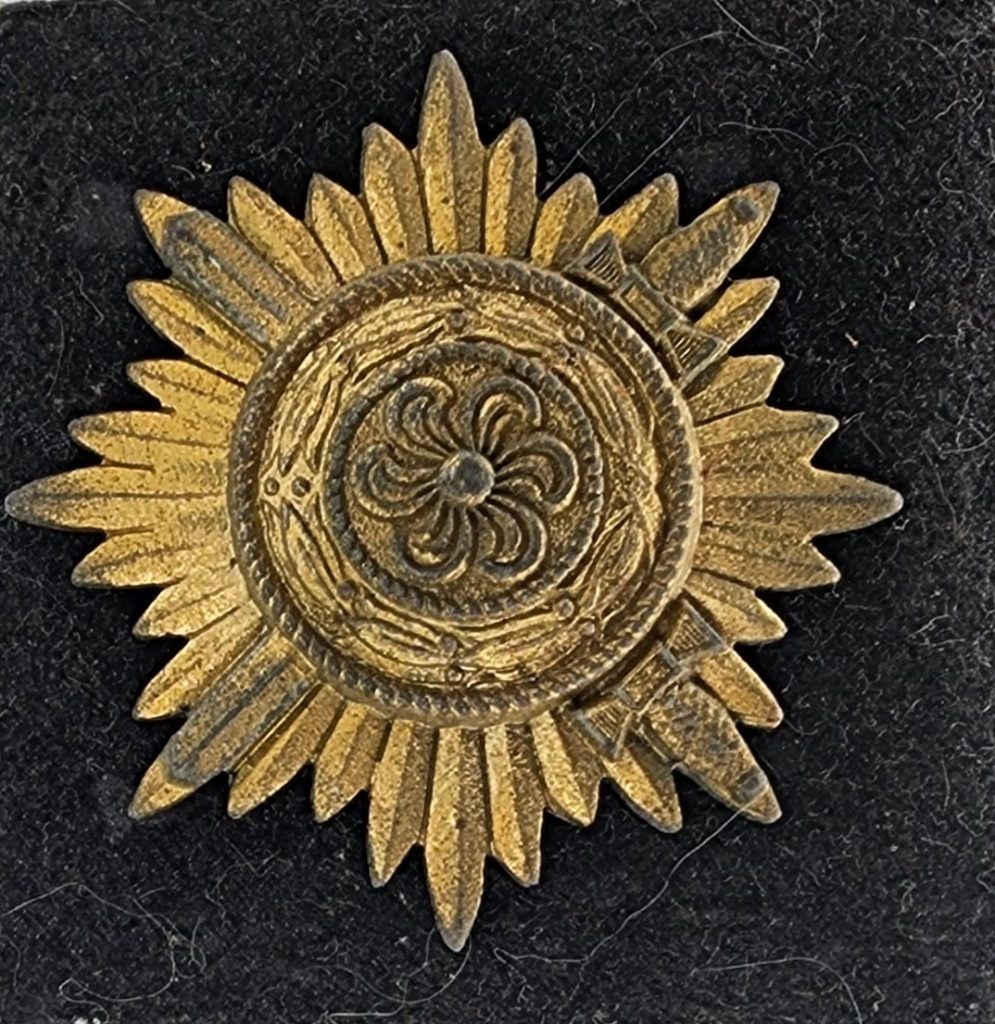
WWII German Luftwaffe Collar Tabs. The blue color denotes Reserve troops. Lieutenant and Captain ranks.
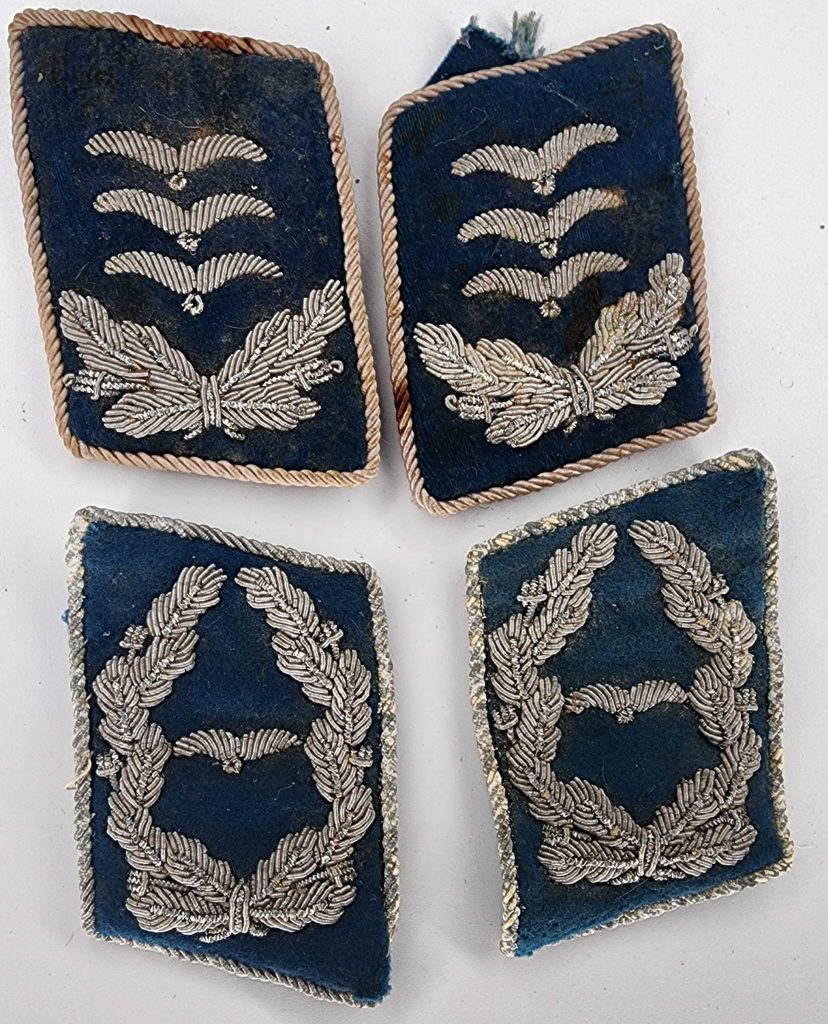
WWII German SS Collar Tab. Excellent example cut from an original uniorm.
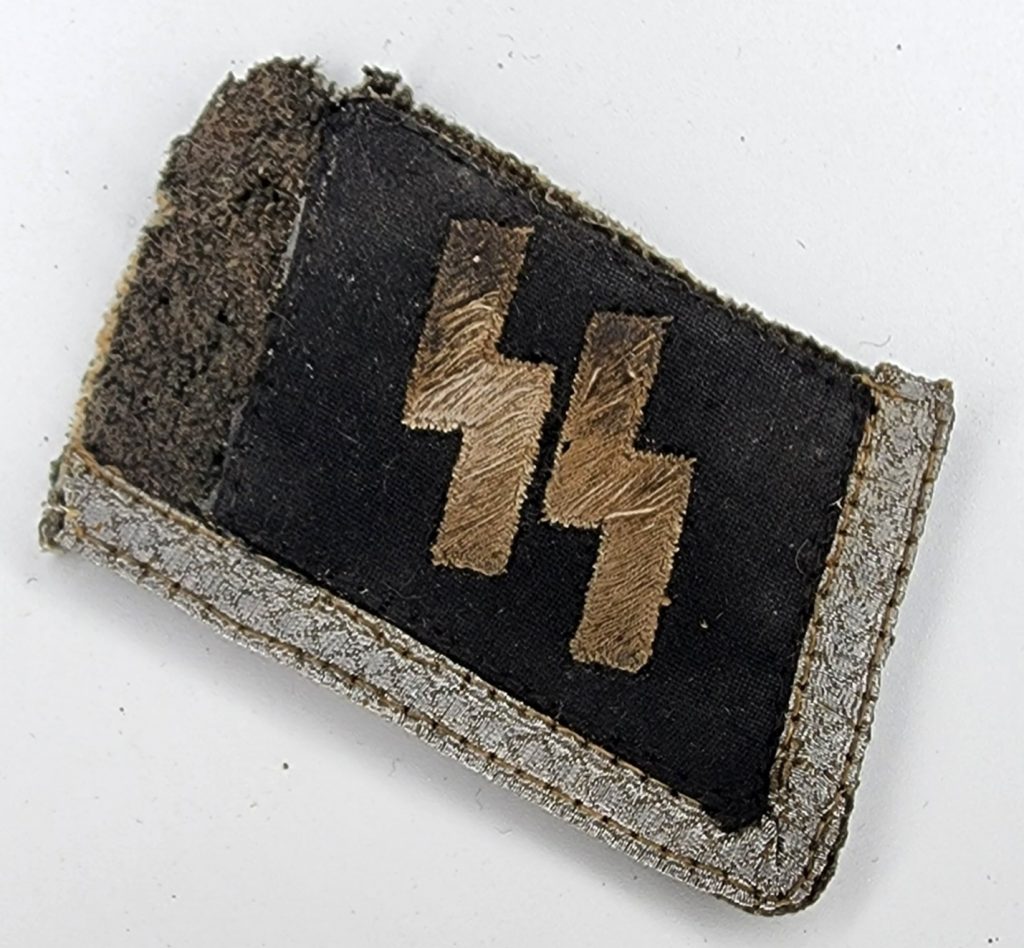
WWII German Army Insignia. Nice bullion breast eagle cut from a uniform. Also pictured is a set of matching shoulder boards.
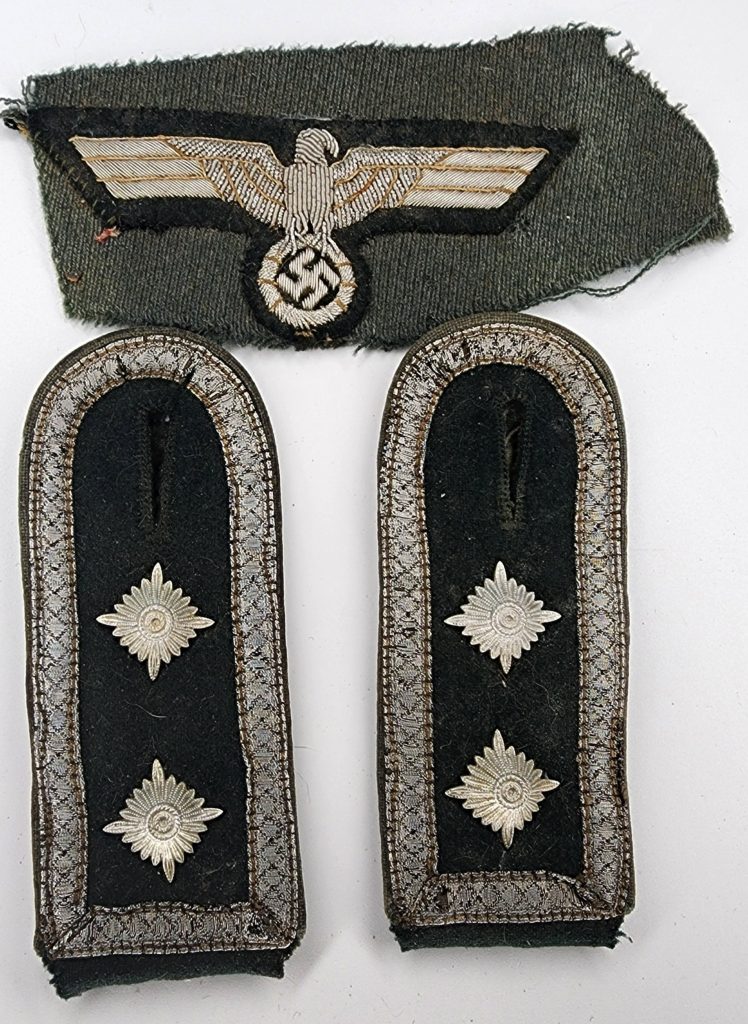
WWII German SS Adolf Hitler Cuff Title.. The 1.SS-Panzer-Division LSSAH, (Leibstandarte SS Adolf Hitler), was the premier unit of the Waffen-SS, (Armed-SS), that were originally formed in March 1923. From its original inception it served under numerous designations until the tenth anniversary of the failed Beer Hall Putsch on the night of November 8TH/9TH 1933 when Hitler bestowed them with the honor title, Leibstandarte SS Adolf Hitler, (Life Regiment Adolf Hitler). The LSSAH underwent further expansions and designation until October 22ND 1943 when it received its final designation as 1.SS-Panzer-Division LSSAH, (Leibstandarte SS Adolf Hitler).

WWII German AFRIKA Cuff Title. On January 15, 1943 the Africa cuff title was instituted by Adolf Hitler as a formal campaign decoration. The final terms of this award required at least six months service in the North African theatre of operations, or any lesser period if the recipient was decorated for bravery, was wounded or if killed – in which case a posthumous award was made. Those who contracted a debilitating illness which required evacuation required three months active service prior to illness. After May 6, 1943 the qualifying period of service was reduced from six to four months.

WWII German Marksman Lanyards. Originally German lanyards were introduced on June 29, 1936. The lanyards were worn suspended from under the right shoulder strap and attached to the second top front closure button of most uniforms. Award of the marksmen’s lanyards was discontinued on February 14, 1941 to be reinstituted at the successful conclusion of the war. The upper example is for German Army, the lower is for German Luftwaffe.
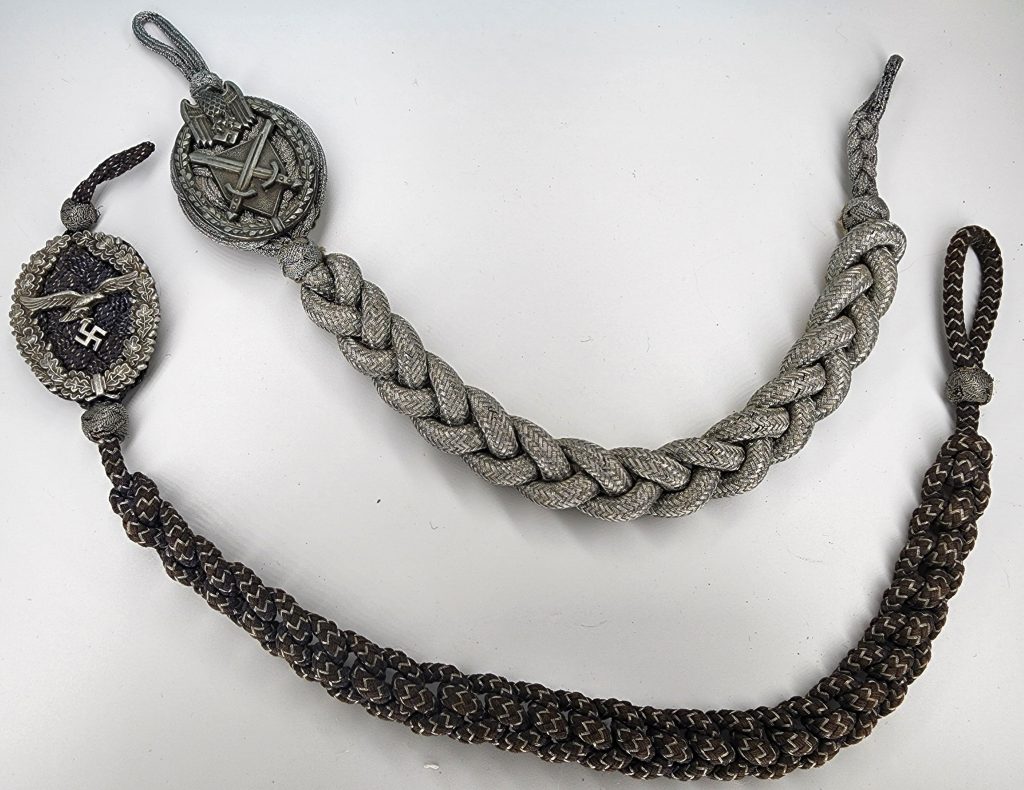
WWII German Medal Bar with Ribbon Bar. This example consists of a 1914 Iron Cross, 2ND class, the Bavarian Military Merit Cross 3rd Class with Swords, Combatant’s Cross of Honor 1914/18, 1938 Faithful Service Decoration 2ND class for twenty-five years service, a 1914/18 Hungarian Combatant’s Commemorative Service Medal, and an Austrian long service medal.
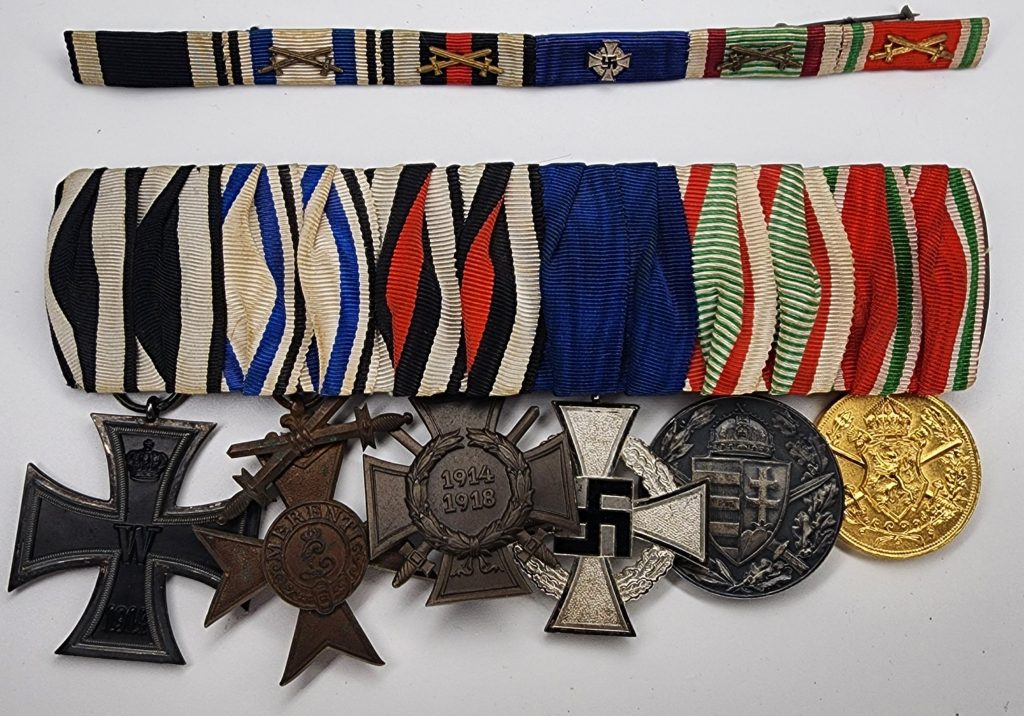
WWII German Nazi Party Armband. Probably one of the most recognizable pieces of insignia associated with the Nazi regime is the swastika armband. Utilized by pretty much by all the organization of the Third Reich in one form or another. The swastika is an ancient symbol that was utilized in numerous diverse cultures and signified both the cycle of life and the sun. The swastika was also a Nordic rune and the pagan Germanic symbol for Thor, God of Adventurers. During WWI the swastika began to represent national and anti-Semitic leanings in such organizations as the Thule society and other German nationalistic movements and later, assorted Freikorps groups. In the midsummer of 1920 Hitler adopted the swastika as the premier symbol of the NSDAP. In “Mein Kampf”, Hitler states that although numerous party members had proposed the swastika and red, black and white as the party emblem and colors it was he himself who came up with the final design.
